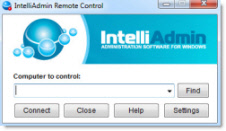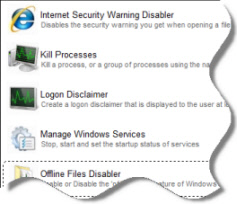Startup Repair not available??
Hi,I recently had to deal with a server with Windows Server 2008 x64 Web Edition that failed to boot after a recent windows update.(It had "install recommended updates" ticked in Windows Update, so I assume it was a bad driver or something)Anyway, Safe Mode wouldn't work, last known configuration wouldn't work so there wasn't anyway of booting into the installation.So I put in the Windows Server 2008 Web Edition cd and went looking for the Startup Repair option and it doesn't exist!It was completely missing in the list after going into repair...So I was forced to reinstall Windows Server 2008 but found I couldn't do that either. In Windows Server 2003 it was really easy to fix a failed boot installation by simply reinstalling over the top, it would also keep the settings in IIS etc so they didn't have to be restored.So my question is two fold:a) Why is the Startup Repair option missing? Is it even in Windows Server 2008 at all? (I know it definitely is in Vista)b) Why doesn't Windows Server 2008 support reinstalling anymore?This severelyrestricts my recovery options in the event of hardware failure, especially if I have to replace the motherboard or other hardware that causes the boot to fail.Thanks,
Martin
August 24th, 2008 12:24pm
Hello Martin,
a) Why is the Startup Repair option missing? Is it even in Windows Server 2008 at all? (I know it definitely is in Vista)
A: As far as we known, Startup Repair and System Restore options have been removed in the Windows PE of Windows Server 2008 which is by design.
b) Why doesn't Windows Server 2008 support reinstalling anymore? This severely restricts my recovery options in the event of hardware failure, especially if I have to replace the motherboard or other hardware that causes the boot to fail.
A: based on the local test, Windows Server 2008 supports re-install the operation system. If I don't misunderstand, what you concern about "reinstall" actually is to restore the system in the event of hardware failure.
As matter of fact, we can utilize built-in Windows Server Backup feature to make a full system backup and then restore server operating system by performing system recovery in the Windows PE environment.
Please note: We recommend that you restore the system to the computer that have the same or similar hardware with the system that you backup before.
For your reference, I have list the steps to perform full backup and restore system as follow.
Steps to perform a manual full backup of the server:
1. Click Start, click Administrative Tools, and then click Windows Server Backup.
2. From the Actions pane of the snap-in default page, under Windows Server Backup, click Backup Once. This opens the Backup Once Wizard.
3. On the Backup options page, do one of the following, and then click Next:
A. Click The same options that you used in the Backup Schedule Wizard for scheduled backups.
B. Click Different options.
4. On the Select backup configuration page, do one of the following, and then click Next:
A. Click Full server to back up all volumes on the server.
B. Click Custom to back up just certain volumes, and then click Next. Then, on the Select backup items page, select the check boxes for the volumes that you want to back up.
Please Note
Volumes that contain operating system components or applications are included in the backup by default to enable operating system recovery and system state recovery options. If you are sure you do not want these recovery options, you can exclude them by clearing the Enable system recovery check box.
5. On the Specify destination type page, click Local drives, and then click Next.
6. On the Select backup destination page, select the destination that you want to use to store the backup from the drop-down list. If you choose a hard disk, confirm that there is enough free space on the disk. If you choose a DVD drive or other optical media, indicate whether you want the contents to be verified after they are written to.
7. On the Specify advanced options page, indicate whether you want to create a copy or full Volume Shadow Copy Service (VSS) backup. You should click VSS full backup if you are sure you are not using another product to create backups. Otherwise, you should click VSS copy backup. Click Next.
8. On the Confirmation page, review the details, and then click Backup. The wizard prepares the backup set, formats the optical or removable media (if that is what you are using), and then creates the backup.
9. On the Backup progress page, you can view the status of the backup. If you are backing up to a DVD, when the backup starts, you will receive a message to insert the first DVD in the drive and then, if the backup is too large for a single DVD, you will be prompted for subsequent DVDs as the backup continues. During this process, you should physically write the information next to Disk label in the message on the DVD that you insert. You will need this information later to perform a recovery.
Steps to restore a server operation system:
To recover your operating system or full server using a Windows Setup disc
1. Insert the Windows Setup disc into the CD or DVD drive and turn on the computer. If needed, press the required key to boot from the disc. The Install Windows Wizard should appear.
2. Specify language settings, and then click Next.
3. Click Repair your computer.
4. Setup searches the hard disk drives for an existing Windows installation and then displays the results in System Recovery Options. If you are recovering the operating system onto separate hardware, the list should be empty (there should be no operating system on the computer). Click Next.
5. On the System Recovery Options page, click Windows Complete PC Restore. This opens the Windows Complete PC Restore Wizard.
6. Do one of the following:
a. Click Use the latest available backup (recommended) and then click Next.
b. Click Restore a different backup and then click Next.
7. If you chose to restore a different backup, on the Select the location of the backup page, do one of the following:
a. Click the computer that contains the backup that you want to use, and then click Next.
Please note:
If the storage location contains backups of multiple computers, make sure that you click the row for the backups for the computer that you want to use. Then, on the Select the backup to restore page, click the backup that you want to use, and then click Next.
b. Click Advanced to browse for a backup on the network, and then click Next.
8. On the Choose how to restore the backup page, do the following optional tasks, and then click Next:
a. Select the Format and repartition disks check box to delete existing partitions and reformat the destination disks to be the same as the backup. This enables the Exclude disks button. Click this button and then select the check boxes associated with any disks that you want to exclude from being formatted and partitioned. The disk that contains the backup that you are using is automatically excluded.
Please Note:
Unless a disk is excluded, data on it can be lostregardless of whether it was part of the backup or whether it has volumes that are being restored.
In Exclude disks, if you do not see all the disks that are attached to the computer, you might need to install the associated drivers for the storage device.
b. Select the Only restore system disks check box to perform an operating systemonly recovery.
c. Click Install drivers to install device drivers for the hardware that you are recovering to.
d. Click Advanced to specify whether the computer is restarted and the disks are checked for errors immediate after the recovery.
9. Confirm the details for the restoration, and then click Finish.
Please note:
a. BMR cannot be performed from a dynamic disk backup. If any system component reside on a dynamic disk, backups running to any volume on the dynamic disk cannot run BMR.
b. EFI partitions are supported.
c. OEM partitions are not supported.
Hope it helps.David Shen - MSFT
Free Windows Admin Tool Kit Click here and download it now
August 26th, 2008 2:49pm
Hi,Full system backup is not a practical option as data will still be lost between the times a full system backup was performed.Also, the server uses dynamic disks in a RAID configuration, so what am I supposed to do in this situation anyway?We need the option just like in Windows 2003 of reinstalling an installation over the top of a pre-existing installation. Is this possible?Thanks,Martin
August 27th, 2008 4:45am
Hi Martin,
I am afraid to say that it is not possible to perform repairing installation of the operation system in Windows Server 2008, which can recover the key components of the OS in the event of the system crash. Currently, the possible way is to perform complete system recovery with the previous server backup.
Also, if we want to recover the data that may be lost between the times you perform a full system backup, I think we need to timely backup the system in case of the system crash which leads to the loss of the data.
I understand that it is inconvenient without the repair installation option. We will forward your feedback to product team.
Thanks for your understanding.David Shen - MSFT
Free Windows Admin Tool Kit Click here and download it now
August 27th, 2008 1:28pm
Hello David,
I cannot perform a Windows Complete PC Restore on 64-versionWindows Server 2008Enterprise (or 64-bit Vista Enterprise )using setup media disk :
Restore operation failed. Windows cannot restore a backup that was created on a different computer architecture. The backup was created on a computer with a different architecture(x64) than this computer(x86).With 32-bit version - OK !
August 27th, 2008 2:25pm
Just a note on the restore procedures you have listed here. The step that saysb. Click Advanced to browse for a backup on the network, and then click Next.doesn't work as far as i can tell in my scenario. I am restoring into a Hyper V machine 64Bit .It doesn't work for me and I've found other postshttp://www.experts-exchange.com/OS/Microsoft_Operating_Systems/Server/Windows_Server_2008/Q_23473064.htmlMaybe you could shed some light on it? Is there a trick?ThanksJohnB
Free Windows Admin Tool Kit Click here and download it now
November 3rd, 2008 8:44am
Yes, I agree, this is terrible news that we cannot perform an in-place/repair/reinstall over the top of our installation to get up and running. And because of this, I think I am out of luck. But, here's my situation, maybe someone can give me some ideas.1. I have a full Win 2008 64bit backup of my only DC. Same computer, just different hard drive I am restoring to. (IDE not SATA)2. I attempt to boot to installation DVD (which is the 32/64 bit together) and run the Repair so I can do the recovery. This won't work because it says something like "not the same architecture, you have 32bit, but restoring 64bit."3. After research, found that I can use the Vista 64bit DVD to do recover from backup. Attempted that, but instead I get a different error immediatly after recovery starts. Says something like "invalid data". I couldn't find anything on Google about that error.4. Maybe my backup is corrupt? No. I setup a second partition on the drive, installed a fresh/clean load of 2008 64bit Server, THEN ran Windows Backup to recover all the files to the first partition successfully. So my data is not corrupt.5. With all my files recovered, I just needed to fix the mbr. Since there is no Startup Repair in Server version (STUPID!!!) , I used Vista 64bit again and it fixed up my boot record. I then reboot the system, which appeared to come up ok, but it did not, it gave me a BSOD. (I expected this, different drive) It is at this point I wonder, "Why can't I just do a repair install like on 2003 server?" If moving to different hardware, that is what you do to get the server running again.I am going to run through this whole process again, only with a SATA drive like I had before. Hopefully restoring the files on the C: drive and fixing boot record will allow me to boot without a BSOD and I'll be happy for now.I do have great concerns though. Unless I am going to use something like Acronis to make an image that supports moving to different hardware on recovery, there doesn't appear to be any way to get a server up and running. I also tried recovering the System State onto a clean load and of course, it crashed with a blue screen on boot. (which cannot be fixed in 2008 Server) Best way I can see to really protect your DC is to have a backup DC in place, where you can always sieze roles and keep AD safe. But that's not exactly "doable" on very small networks. (my clients won't want to pay for a second server)I'll post results of recovery back on the SATA drive. But if that doesn't work, how can I get my DC back? I wish my Action Pack had an actual 64bit Server DVD, without the 32bit on the same disc. I wonder if that would recover ok?Greg
November 7th, 2008 12:55pm
Hi AllI am cross posting a post I put up yesterday - same problems with recovering a x64 bit windows 2k8 installation. I ge the same exact message as cake-FM.David the instructions you have posted I have followed and I am sure that cake-FM has also but we both get the error message about trying to restore a x64 on a x32 - but its the same machine I am trying torecover my full backup onto, that I installed and took the backup on!!At what point does the WindowsPE think that the installation is a 32 bit one now?Greg I agree with you - at this point I cannot go any further with my windows 2008 installation without finding a way to completely restore this server if all hell breaks loose. We are a small shop - I am the only one here who has a fighting chance of figuring this out and at he moment I am lost - so that's why I ineed to come up with a restore procedure that works for someone else to follow and know that it works.
Free Windows Admin Tool Kit Click here and download it now
November 11th, 2008 10:11pm
sorry the posthttp://social.technet.microsoft.com/Forums/en/winservergen/thread/3c194382-d975-44f8-9dbf-ae48b37e08a8/
November 11th, 2008 10:11pm
Ok - I have figure this one out.Doing a bear metal restore earlier this morning gave me an error "This version of the System Recovery Options is not compatible with the version of windows you are trying to repair ..."I have been using the MSDN supplied DVD - Windows Server 2008 (x64 and x86) disk 4454 May 2008.This has the x64 and x86 versions on it. However it would seem that when you fire up the WindowsPE it is only x86 as there are no choices between x86 and x64.So I downloaded this version from the MS download site-en_windows_server_2008_datacenter_enterprise_standard_without_hyperv_x64_dvd_X14-27010.isobooted into the repair your computer and it works. I have now successfully recovered a backup I did onto a brand new disk - no OS and rebooted successfully.So the question to MS is why is there no option to boot the WindowsPE environment x64 on the dual DVDs???
Free Windows Admin Tool Kit Click here and download it now
November 12th, 2008 2:02am
@Jono99's what site can i download the "en_windows_server_2008_datacenter_enterprise_standard_without_hyperv_x64_dvd_X14-27010.iso" from. i am new to windows server 2008 , due to power outrage my file got corrupt and i need to do a restore it is very urgent.
November 20th, 2010 4:14pm
Hi All,
In some cases you can use Vista utils to work on Windows 2008 server.
If you want to do startup repair try the Windows Vista Recovery Disc
http://www.vista123.net/content/download-windows-vista-recovery-disc
I got it to run on a broken Windows 2008 server installation.
Good luck,
KOTKeep on Truck'in
Free Windows Admin Tool Kit Click here and download it now
April 10th, 2011 10:43am


